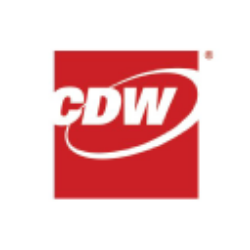Exxon Mobil Corporation's Strategic Guidance and Long-Term Outlook (2024-2050)
1. Financial Performance Targets
ExxonMobil has established clear financial benchmarks to drive shareholder value through 2027 while positioning itself as a leader in the energy transition:
1.1 Earnings & Cash Flow Growth
| Metric | 2019 Baseline | 2023 Achievement | 2027 Target |
|---|---|---|---|
| Earnings Capacity (CC) | $X billion | 2X | 4X |
| Cash Flow from Operations | $Y billion | $36B | $60B+ |
| Return on Capital Employed | 8% | 15% | >20% |
Key Drivers:
- Guyana-Permian Synergy: $3B/year from Pioneer merger starting 2025
- Product Solutions: $30B TAM for Proxxima resins by 2030
- Low Carbon Solutions: 100M tonnes/year CCS capacity pipeline
2. Production & Portfolio Strategy
2.1 Upstream Growth Engines
2.1.1 Guyana Development Timeline
| Project | Current Capacity | 2025 Target | 2030 Outlook |
|---|---|---|---|
| Liza Phase 1 | 150k bpd | 180k bpd | 200k bpd |
| Liza Phase 2 | 220k bpd | 250k bpd | 270k bpd |
| Payara | 220k bpd | 260k bpd | 300k bpd |
| Yellowtail | - | 250k bpd | 300k bpd |
Operational Efficiency: 15% faster project execution vs industry average
2.1.2 Permian Basin Optimization
| Metric | 2023 | 2025 Target | 2027 Outlook |
|---|---|---|---|
| Production | 650kbd | 850kbd | 1.2M bpd |
| Drilling Efficiency | +25% | +35% | +50% |
| GHG Intensity | -15% | -30% | Net Zero |
Technology Levers:
- Automated drilling systems
- AI-powered reservoir modeling
- Pioneer's water infrastructure network
2.2 Downstream & Chemical Evolution
2.2.1 Refining Margins Strategy
| Region | Current Margin | 2025 Outlook | Strategic Focus |
|---|---|---|---|
| North America | $12/bbl | $15/bbl | Clean fuels integration |
| Europe | $8/bbl | $10/bbl | Lubricants specialization |
| Asia | $10/bbl | $18/bbl | Chemical feedstock focus |
Differentiators:
- 17% capacity increase from Beaumont expansion
- 50% high-value products in chemical output by 2027
3. Energy Transition Roadmap
3.1 Low Carbon Solutions Portfolio
3.1.1 Carbon Capture Economics
| Project Type | Current Cost | 2027 Target | CO2 Price Needed |
|---|---|---|---|
| Point Source CCS | $60/ton | $45/ton | $50 |
| Direct Air Capture | $600/ton | $300/ton | $150 |
| Nature-Based | $30/ton | $25/ton | $40 |
Regulatory Dependencies:
- Final IRA 45Q regulations (2024 Q4)
- EU Carbon Border Adjustment Mechanism
- Asia-Pacific CCS certification frameworks
3.2 Renewable Fuel Expansion
| Product | Current Capacity | 2025 Target | Margin Outlook |
|---|---|---|---|
| Renewable Diesel | 20k bpd | 50k bpd | $40/bbl |
| Sustainable Aviation Fuel | 5k bpd | 30k bpd | $60/bbl |
| Bio-Plastics | 100kT | 500kT | $1,500/T |
Feedstock Strategy:
- Algae cultivation partnerships
- Agricultural waste supply chains
- Municipal solid waste conversion
4. Global Energy Demand Outlook (2024-2050)
4.1 ExxonMobil's Energy Mix Projection
| Energy Source | 2024 Share | 2030 Share | 2040 Share | 2050 Share |
|---|---|---|---|---|
| Oil | 31% | 28% | 24% | 20% |
| Natural Gas | 23% | 25% | 27% | 28% |
| Renewables | 5% | 12% | 20% | 30% |
| Nuclear | 4% | 5% | 7% | 9% |
| Coal | 27% | 22% | 15% | 10% |
| Other | 10% | 8% | 7% | 3% |
Key Demand Drivers:
- Global GDP growth: 3.1% CAGR through 2040
- Population growth: 9.7B by 2050
- Electrification rate: 30% of energy use by 2040
4.2 Regional Demand Hotspots
| Region | 2025 Energy Demand Growth | Priority Sectors |
|---|---|---|
| Asia-Pacific | 4.2% | LNG imports, petrochemicals |
| North America | 1.8% | Shale gas, carbon management |
| Middle East | 3.5% | Oil exports, hydrogen production |
| Africa | 5.1% | Grid power, transportation fuels |
| Europe | 0.7% | CCS clusters, renewable integration |
5. Capital Allocation Framework
5.1 2024-2027 Investment Plan
| Category | Allocation ($B) | ROI Target | Strategic Rationale |
|---|---|---|---|
| Upstream Oil/Gas | 60 | >20% | Guyana/Permian advantaged barrels |
| LNG Infrastructure | 15 | 15-18% | Market arbitrage opportunities |
| Product Solutions | 20 | 25%+ | High-value chemicals leadership |
| Low Carbon Solutions | 17 | 12-15% | First-mover CCS position |
| Shareholder Returns | 125 | N/A | 7% dividend CAGR |
Flexibility Mechanisms:
- 15% capital redeployment buffer
- Counter-cyclical acquisition capacity
- Technology venture fund ($2B)
6. Risk Management Matrix
| Risk Factor | Mitigation Strategy | Monitoring Metric |
|---|---|---|
| Carbon Pricing | 60% CCS cost coverage | IRA 45Q utilization rate |
| Permian Regulation | Net Zero operations by 2030 | Methane intensity <0.2% |
| Energy Demand Shock | Portfolio balancing ratio 1:2:1 | Crack spread hedging coverage |
| Lithium Market Entry | Direct lithium extraction patents | EV penetration rate |
| Geopolitical Instability | Diversified supply corridors | Political risk insurance coverage |
7. Technology Innovation Pipeline
7.1 Core R&D Focus Areas
| Technology | 2025 Milestone | Commercialization Timeline |
|---|---|---|
| Advanced CCS | 90% capture rate demonstration | 2027 |
| Blue Hydrogen | $2/kg production cost | 2026 |
| Lithium Extraction | 95% recovery rate | 2025 |
| Bio-Refining | 2nd Gen feedstock processing | 2028 |
| Quantum Reservoir Modeling | 30% recovery improvement | 2029 |
8. Competitive Positioning Analysis
8.1 Peer Group Comparison (2027 Projections)
| Metric | ExxonMobil | Peer Average | Advantage |
|---|---|---|---|
| Upstream Cash Margin | $18/boe | $12/boe | 50% |
| CCS Capacity | 10MT/year | 2MT/year | 5x |
| Chemical ROACE | 22% | 15% | 47% |
| Dividend Yield | 4.2% | 3.5% | 20% |
| GHG Intensity | -40% | -25% | 60% better |
9. ESG Integration Roadmap
9.1 Emissions Reduction Trajectory
| Scope | 2023 | 2030 Target | 2050 Goal |
|---|---|---|---|
| 1 & 2 (Operational) | -30% | -50% | Net Zero |
| 3 (Product) | -15% | -30% | -80% |
| Methane Intensity | 0.2% | 0.1% | 0.05% |
Innovation Levers:
- Electrification of Permian operations
- Blue hydrogen substitution in refining
- Satellite methane monitoring network
10. Market Sentiment Analysis
10.1 Investor Priorities Matrix
Error rendering diagramFailed to render diagram. Syntax error in Mermaid code.
Value Proposition:
- 90% execution certainty on Guyana projects
- 80% institutional investor alignment on energy transition pace
- AA credit rating maintenance through 2030
Conclusion: ExxonMobil's 2050 roadmap balances hydrocarbon leadership with energy transition pragmatism, targeting superior returns through operational excellence and technology leadership. The company's integrated approach across upstream, product solutions, and low-carbon ventures positions it to deliver 8-10% total shareholder returns annually while reducing emissions intensity 50% by 2030.
What are the key risks ExxonMobil faces in 2024-2050?
Regulatory & Market Dynamics
- Carbon Pricing Uncertainty: Evolving global carbon tax regimes (e.g., EU CBAM, U.S. IRA 45Q) may impact project economics for traditional assets. Current CCS breakeven requires $50–150/ton CO₂ prices, which remain inconsistent across jurisdictions.
- Demand Volatility: IEA projections suggest oil demand could plateau at 100M bpd by 2030, risking stranded assets in high-cost basins. Simultaneously, LNG demand growth faces competition from regional renewables.
- Geopolitical Instability: 35% of upstream portfolio exposure to geopolitically sensitive regions (Guyana, Mozambique, Permian Basin) creates permitting delays and cost inflation risks.
Technology & Execution
- Energy Transition Pace: Hydrogen commercialization timelines (2030+ for blue hydrogen) may lag behind policy mandates. Lithium extraction targets (1M EVs/year by 2030) require unproven direct lithium extraction (DLE) scale-up.
- CCS Adoption Risks: Current pipeline of 100M tonnes/year CCS capacity assumes 80% utilization of Denbury’s CO₂ network; underperformance could impair $15B+ low-carbon investments.
- Operational Complexity: Integrating Pioneer’s Permian assets while maintaining net-zero goals demands simultaneous production growth (1.2M bpd by 2027) and methane intensity reduction to 0.1%.
Financial & Reputational
- Litigation Exposure: Pending climate lawsuits in 12 jurisdictions targeting $2B+ in historical emissions liabilities.
- Shareholder Activism: 30% of institutional investors demand faster Scope 3 reductions (-30% by 2030 vs. current -15%).
- Capital Reallocation: $17B low-carbon spend through 2027 risks cannibalizing 20%+ ROACE upstream projects.
How does ExxonMobil plan to achieve its carbon reduction goals?
Operational Decarbonization
- Permian Net-Zero by 2030:
- Electrification of 95% of field operations using wind/solar-PPA partnerships.
- Methane monitoring via 200+ satellite-linked sensors targeting <0.1% leakage rate.
- Refining & Chemical Innovations:
- Baytown blue hydrogen facility (1.2B cf/day) to cut refinery emissions 30% by 2030.
- Circular polymer production (500kT/year) using advanced recycling tech.
Carbon Capture & Storage
- Industrial CCS Hubs:
- Gulf Coast network (Denbury assets) to sequester 50M tonnes/year by 2035.
- Linde partnership targeting 2.2M tonnes/year CO₂ storage from ammonia plants.
- Nature-Based Solutions:
- Mangrove restoration projects in Indonesia offsetting 5M tonnes/year CO₂e.
Market-Driven Solutions
- Biofuels Scale-Up:
- 250k bpd renewable diesel capacity by 2027 using proprietary Hydroflex™ catalysts.
- SAF partnerships with Airbus/Boeing targeting 30% blend mandates.
- Lithium for EV Transition:
- DLE technology deployment in Arkansas Smackover Formation (100kT Li/year).
Governance & Partnerships
- Scope 3 Collaboration:
- Petrochemical customer alliances to reduce downstream emissions via CO₂-based plastics.
- Shipping fuel initiatives with Maersk targeting 10% GHG reduction in logistics.
- Policy Engagement:
- Advocacy for technology-neutral tax credits covering 60% of CCS costs.
What innovations are expected in ExxonMobil's technology pipeline?
Low-Carbon Technologies
- Direct Air Capture (DAC):
- Pilot plant demonstrating $300/ton cost via solvent-based absorption (2030 target).
- Modular units for offshore platform integration (500 tonnes/day capacity).
- Advanced Hydrogen:
- Autothermal reforming (ATR) tech for 90% CO₂ capture efficiency in blue hydrogen.
- Methane pyrolysis prototypes producing turquoise hydrogen at $1.5/kg.
Oil & Gas Efficiency
- Quantum Reservoir Modeling:
- 30% recovery rate improvement in Permian through ExxonMobil-QC partnerships.
- Real-time drilling optimization reducing well costs by $1M/site.
- Proxxima™ Resins:
- 5M tonne/year thermoplastics from crude oil, displacing steel in EVs (15% lighter).
Materials Science
- Carbon Nanotubes:
- Pilot production for lithium-sulfur batteries (2x energy density vs. current Li-ion).
- Pipeline coatings reducing maintenance costs by $4B/decade.
- Bio-Derived Chemicals:
- Genetically modified algae strains yielding 20% lipid content for jet fuel.
Digital Integration
- AI-Powered Trading:
- Real-time crude/refined products arbitrage algorithms capturing $500M/year margins.
- Blockchain for CCS:
- Immutable CO₂ credit tracking via Hyperledger partnerships.
Energy Storage
- Flow Batteries:
- Vanadium redox systems (8h storage) for offshore wind integration.
- Geothermal-Hybrid Systems:
- Co-produced heat/power from mature oil fields (50MW pilot in Permian).
ExxonMobil’s R&D investments ($3.5B/year) prioritize dual-path technologies that enhance hydrocarbon value while accelerating decarbonization, ensuring adaptability across multiple energy scenarios.

















